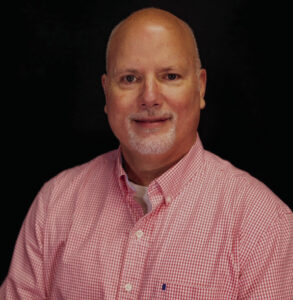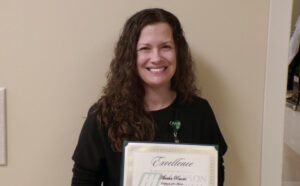BAE Systems works to aid American warfighter with expansion in Huntsville
HUNTSVILLE — During a period of rapid growth in Madison County, several large corporations have announced plans to build and expand in the area, bringing more job opportunities to the region. BAE Systems is one of these.
Having celebrated their groundbreaking on a new facility in Huntsville in September 2018, company officials recently flew into town to join numerous other companies at the AUSA Global Force Symposium and Exposition at the Von Braun Center March 26-28. There, they explained more about what they do as a corporation, what to expect with the new facility—on track to open in early 2020—and how that all fits into the local community.
A multi-billion-dollar corporation, BAE Systems is the third-largest defense contractor in the world, according to Paul Markwardt, vice president and general manager of survivability, targeting and sensing solutions. They are also one of the largest suppliers to the United States Pentagon. Markwardt oversees a portion of the business, mainly in the U.S., that is “very, very diverse.”
“The majority is U.S. defense for my business. My business also does a lot of international, and then I also do some commercial products as well,” he explained. The company has a number of key locations—including New Hampshire, Massachusetts, California, Hawaii, the U.K., Israel and Austin, Texas—though the expansion in Huntsville could turn it into another key location for the company. “We’re hoping that Huntsville will be the next big one,” he said.
Markwardt said BAE Systems plans to bring some of its core technology down to Huntsville that will benefit customers in and around Redstone Arsenal.
“Precision-guided munitions is one key area that we’re going to be focusing on here, as well as our aircraft protection,” Markwardt said. “… We’re also working with the missile defense organization here. We’re a supplier to Lockheed Martin on the THAAD (Terminal High Altitude Area Defense) program, and we do the seeker for the THAAD program, so we’re in the process of getting some new contracts from Lockheed for work that we’re actually going to start down here—kind of the next generation version of the seeker.”
BAE Systems is a supplier to Lockheed Martin on the THAAD program. (Record Photo/Kendyl Hollingsworth)
BAE Systems is also known for their APKWS (advanced precision kill weapon system) laser-guided rockets, which incorporates pinpoint accuracy that aims to minimize collateral damage. According to their website, the rocket has been proven in combat for five years now and is the government’s only program of record for 2.75-inch laser-guided rockets. All four U.S. armed forces use it, and in combat, the APKWS rocket boasts a more-than-93-percent hit rate when it was fired from both rotary- and fixed-wing platforms. It is also known for being cost-effective since it can be implemented into existing unguided rocket inventories, rather than organizations buying a new weapon system altogether.
The APKWS (advanced precision kill weapon system) laser-guided rockets incorporate pinpoint accuracy to minimize collateral damage. (Record Photo/Kendyl Hollingsworth)
Aircraft survivability systems are another asset BAE Systems brings to the table. The company produces a family of systems designed to automatically “sense, process, and respond to (infrared) threats, and improve situational awareness – while helping aviators execute their missions in hostile environments,” according to their website. Like the APKWS, these systems have been proven in combat and are known for being cost-effective.
Often, a family of systems are used to increase aircraft survivability and protect warfighters. (Record Photo/Kendyl Hollingsworth)
Currently with about 30 employees in Huntsville, the expansion—which includes a new facility and room to grow in the future—plans to allow for hundreds more over time.
“It’s very deliberate that we’re expanding here—also in Austin,” said Dave Harrold, director of business development in survivability, targeting and sensing solutions for BAE Systems. “Here, for a number of years it’s been a growing center of gravity for us from a customer perspective, and it only made sense for us to be more present with our customers here to be closer around finding solutions to their biggest challenges, and so that’s why we made the move as a corporation—to really not just have a few people in a leased facility here, but to really open up what we’re doing here, and we have great thoughts about growth here in this space.”
Markwardt emphasized that all local people—architects, construction companies, builders and more—are working to make the new facility a reality.
Available jobs will mainly include engineering and light manufacturing, and both Markwardt and Harrold said they plan to have at least 200 employees at the site during the new facility’s first year. Those will be some combination of company transplants and new hires.
“The competition is stiff down here for employers because there’s a lot of talent, but there’s a lot of people like us coming into the community,” Harrold added. “I think we found in other such situations that a combination of existing employees and new employees probably is the best mix because it’s not everybody trying to learn a new company, new processes and things like that.”
Though the plan is to have 200 employees in the first year, BAE Systems hopes to continue adding onto that number.
“These are all high-tech, high-paying jobs that we’re bringing to the area,” Markwardt said. “The facility itself is capable of holding about 400, so within the first five years, we’re going to get up to 300—maybe even more—and if we’re even widely successful, the site where we’re at has the ability to expand to put additional buildings. It’s a really good opportunity for us to launch the capability down here.”
For more information about BAE Systems, their products or available jobs, visit baesystems.com.















